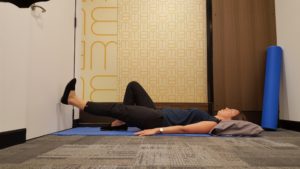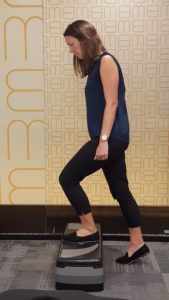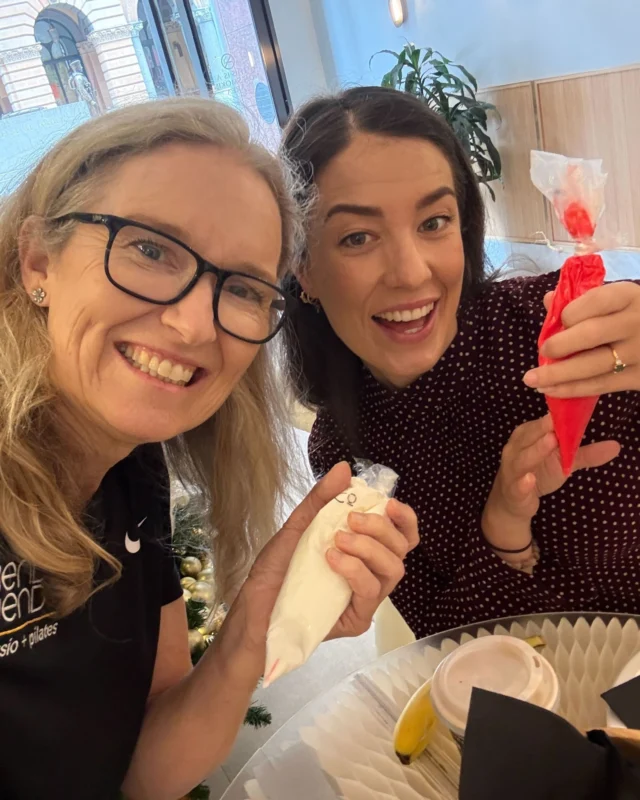About 2.1 million Australians are estimated to have Osteoarthritis with a higher prevalence in females. Osteoarthritis can affect any joint but the most common are the knees, hips, fingers and the big toe.
Knee osteoarthritis affects the hinge joint where our thigh bone (femur) and shin bone (tibia) meet to form our knee. This seemingly simple joint needs to be able to stand the extreme force that our bodyweight, twisting, bending and turning put through it daily.
The joint surfaces of our knee are covered in a smooth tissue called cartilage. In knee osteoarthritis this tissue starts to wear away. The bone underneath then becomes thicker and capsule that surrounds our joint secretes more fluid swelling the joint. To understand what contributes to knee osteoarthritis see the previous blog on wear and tear of your joints.
The main reported symptoms of knee osteoarthritis are:
- Pain
- Swelling
- Stiffness
- Creaking and grinding
- Giving way of the knee due to secondary muscle weakness
There are many ways to manage these symptoms:
Keep your knee moving:
Maintaining your joint range of motion and strength is integral to a fully functioning knee. Your knee has two main movements, bend and straighten, and you can imagine how difficult it would be to get in and out of the car or up the stairs if you couldn’t bend your knee.
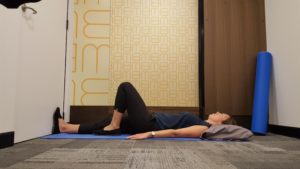 To maintain these two movements, start with just bending and straightening your knee regularly throughout the day. This can be done lying down before you get out of bed in the morning, sitting at your desk at work or even when you’re standing brushing your teeth.
To maintain these two movements, start with just bending and straightening your knee regularly throughout the day. This can be done lying down before you get out of bed in the morning, sitting at your desk at work or even when you’re standing brushing your teeth.
Maintain your knee strength:
It is important to keep your muscles that surround the knee joint strong to off load the joint itself. The below three exercises are designed to strengthen your thigh muscles and are ordered in increasing difficulty.
Lie down on the floor or your bed. Raise your leg straight into the air about 10cm off the ground. Hold for 5-10 seconds. Repeat these ten times over.
Supported squat:
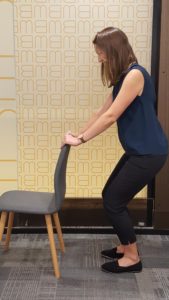 Hold onto the back of a chair. Bend your knees pushing your bottom backwards (like you are going to sit down on a chair). Return to the starting position and repeat ten times.
Hold onto the back of a chair. Bend your knees pushing your bottom backwards (like you are going to sit down on a chair). Return to the starting position and repeat ten times.
Step up slowly onto a step with your affected leg using support if required. Repeat these ten times.
Keep yourself fit and healthy:
Maintaining your cardiovascular fitness is important for your overall health but it can also to help maintain a healthy weight. Weight gain is a key modifiable factor that contributes to osteoarthritis.
Understandably pain is often a barrier to physical activity. Fortunately, different activities place different levels of force on the knee (see this previous blog).
High impact exercise, such as running, places a large force through the knee joint and therefore it has the potential to irritate. Lower impact exercise such as walking lowers this force through the knee. While it is important to maintain weight bearing exercise for bone density, swimming and cycling significantly lower the force through the knee and provide a less painful introduction back into exercise.
Manage your pain levels:
Pain is a common side effect of knee osteoarthritis and it is importance to get this under control to enable everyday function and the ability to exercise.
Heat and cold packs can be used to manage symptoms as they arise. Otherwise speak to your GP about different forms of pain relief that you may be able to take.
If you are experiencing knee pain, speak to one of the friendly team at Bend + Mend in Sydney’s CBD.
